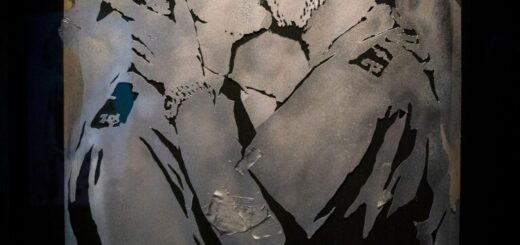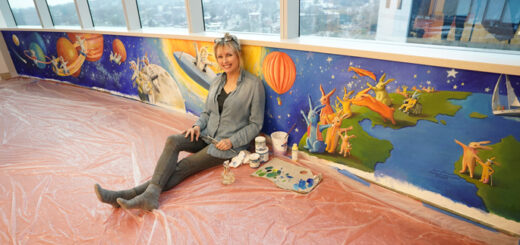Graffiti Hoops Craze: How Street Art Elevates the Game
Graffiti basketball’s been taking urban culture by storm, blending the raw energy of street art with the dynamic pace of the game. It’s where creativity meets the court, and every dribble is a brushstroke that paints a vibrant picture of street life and athleticism.
I’ve seen firsthand how this movement isn’t just about flashy dunks and colorful tags; it’s a form of expression that resonates with the youth, giving them a voice and an outlet in a language they understand. It’s basketball, but not as we know it—it’s a revolution with a spray can in one hand and a ball in the other.
In my journey exploring the graffiti basketball scene, I’ve discovered it’s more than just a game. It’s a lifestyle that encapsulates the spirit of the streets, turning every alley hoop and backboard into a masterpiece. Join me as I dive into this world where sport and art collide in the most spectacular way.
The Rise of Graffiti Basketball
Graffiti basketball has exploded onto the urban scene, captivating the attention of both art enthusiasts and sports fans alike. My journey into this world has shown me that it’s more than just a fad—it’s a vibrant culture that’s spreading rapidly through cities across the globe. As someone who’s witnessed its growth firsthand, I’m excited to delve into the details of how this movement is taking over.
Street art has always been a powerful medium for self-expression, and when combined with the dynamic energy of basketball, the result is magnetic. Young athletes are no longer content with just shooting hoops; they’re transforming courts into bold, colorful canvases. This transformation is multi-layered, with a multitude of meanings that resonate with the youth. At the heart of this movement is a desire for identity and recognition.
The ascension of graffiti basketball can be traced to several key moments. Urban tournaments started featuring not just skilled players but also artists who would paint live, during events, creating a spectacle that drew crowds and media attention. This intertwining of passions has sparked a new wave of sports culture, one that values creativity as much as athleticism.
- Intricate murals on backboards
- Vibrant court lines that tell a story
- Customized sneakers that walk the line between fashion and art
These elements showcase the aesthetic appeal of graffiti basketball, but they also illustrate the community’s commitment to a lifestyle that strays from the mainstream. As I continue to explore this realm, it’s clear that every painted court is a statement, every game a performance, and every player an artist in their own right.
The impact of graffiti basketball can’t be overstated. It’s changed how we view public spaces, turning them into forums for dialogue and interaction. It’s not just about playing the game; it’s about owning it, and rewriting the rules. Whether it’s a local blacktop or a high-profile court, these painted spaces are the heartbeats of neighborhoods, pulsing with the raw energy of competition and creativity.
Engagement with the community has been a pivotal factor in the rise of graffiti basketball. Workshops, exhibitions, and clinics not only foster skills but also empower youth, giving them the tools to express themselves and shape their environment. It’s a portrait of resilience and ambition, painting stories of triumph and togetherness on the very grounds that once were merely a place to play.
Exploring the Fusion of Street Art and Sports

When basketball courts meet the spray-can genius of street artists, a dynamic fusion emerges, igniting a vivid cultural synergy. Graffiti basketball is an art-sport blend that reflects the energy and ethos of the urban environment. It’s not just about injecting vibrancy into the concrete spaces; it’s the embodiment of self-expression and community identity.
As I delve into the nuances of this movement, I’ve observed how each court becomes a storyteller, weaving narratives of its inhabitants through color, form, and texture. These are not mere backdrops for sport; they are active players in the cultural dialogues of the cities. By breaking the bounds of traditional athletic space aesthetics, graffiti basketball has spearheaded a revolution, aligning the physical dynamism of sport with the visceral impact of art.
The adoption of this culture transcends mere aesthetics; it’s about staking a claim on urban territories, often overlooked or underappreciated. Through my research, I’ve noted how these artworks have altered people’s engagement with these spaces. No longer are basketball courts just venues for physical activity, they have become hubs for community gatherings and cultural events.
Here’s how graffiti basketball is leaving its mark:
- Transforms mundane courts into centers of community pride
- Fosters a sense of belonging among local youth
- Encourages diverse groups to interact and connect
The language of this movement is universal. It shouts out that creativity has a place in every aspect of life, including sports. I’ve watched, captivated, as players dribble and shoot against the backdrop of incredible murals, the court alive with motion and color, embodying the pulse of the neighborhood around it. This ongoing artistic innovation within basketball culture cements its status as a cornerstone of modern street art expression.
The Power of Expression: Graffiti Basketball as a Voice

Graffiti basketball isn’t just about bold colors and vivid lines; it’s a language that communicates the stories and emotions of a community. For many artists and players, the court is a sanctuary where they can voice their innermost thoughts without saying a word. Murals speak volumes through images, icons, and typography, resonating with those who may feel unheard in their everyday lives.
As I’ve traveled to different neighborhoods, I’ve observed that each court tells a unique tale. Through intricate artwork, a single basketball court might portray the history of a locality, honor legendary community members, or address social issues that impact the people who play there. In essence, these vibrant courts serve as a megaphone for the masses, allowing silent messages to echo loudly across the asphalt.
Youth engagement in graffiti basketball reinforces this culture of expression. Schools and organizations often facilitate workshops and events that blend art with sport, empowering young people to contribute their own narratives to the courts. This participation not only fosters creativity and physical activity but also cultivates leadership skills among aspiring young leaders.
The language of graffiti basketball is universal, crossing boundaries of language, age, and background. These visual dialogues create an inclusive environment where diversity thrives. Through my lens, the courts have turned into melting pots of culture where stories of triumph, struggle, and solidarity are shared.
Beyond the mere aesthetics, the artwork often reflects the pulse of the surrounding community. Social commentary is a recurrent theme; issues like racial inequality, economic disparities, and environmental concerns frequently find a voice on the court. In this way, graffiti basketball platforms escalate critical conversations, compelling passersby to engage with more than just a game—they’re engaging with the heartbeat of a community.
The Unique Lifestyle of Graffiti Basketball Players

The culture around graffiti basketball isn’t solely about the vibrant courts that these players play on. No, it’s much more than that. It’s a lifestyle, one that embodies creativity, resilience, and community. This lifestyle is like the secret ingredient that spices up the game and turns regular players into artists and leaders within their neighborhoods.
I’ve witnessed firsthand how graffiti basketball players often live dual lives. By day, they might be students or professionals, but once they hit the court, they’re stars in their own right, with their individual flair matching the unique court they play on. This duality extends to their fashion too. Off-court clothing includes hoodies, sneakers, and caps all adorned with street art, showing their allegiance to the graffiti basketball scene.
And let’s talk about their practice rituals. There’s a sense of freedom that players exhibit—practices often include not just drills or exercises but also impromptu expressions of art. They might bring chalk or temporary paint to sketch new designs while practicing their layups or three-pointers. It’s a fluid crossover between disciplines—basketball and art—melding into one.
Community engagement is another aspect of their lifestyle. Graffiti basketball players aren’t just invested in the game; they’re invested in their communities. They organize events, run clinics for local kids, and slyly integrate positive messages into their artwork, provoking thought and change.
- Participating in neighborhood beautification
- Collaborating on murals
- Hosting youth workshops
These acts enrich not only their artistry but also the social fabric of their environment. It’s a cycle where every dunk and every painted line brings value to their communities and hones their identity as players and creators.
Their day-to-day lives reflect the passion that they pour onto the court. There’s no separation between the person and the player—it’s an integrated identity. In graffiti basketball, the ability to express oneself doesn’t stop when the game ends; it’s a continuous flow of energy that transcends the boundaries of the court.
Uncovering the Masterpieces: Graffiti Basketball Courts and Backboards

Graffiti basketball courts and backboards are more than just playing surfaces; they’re emblematic of the communities they serve. Every court has its own story, imbued with the spirit of the neighborhood and the artists who transformed them. I’ve had the pleasure of witnessing these transformations firsthand, where once lackluster spaces burst into life with vibrant hues and powerful imagery.
The artwork on these courts often features distinctive styles that reflect the diversity of the urban landscape. Bold lines, abstract patterns, and portraits of iconic figures from the world of basketball and beyond become centerpieces. Collaborations between artists and local youth add a layer of authenticity and relevance to the designs. These collaborations foster a unique sense of ownership and pride in the collective masterpiece they’ve created.
The impact of these art-infused courts extends well beyond aesthetics. They attract attention, making the spaces more inviting and inclusive. It’s intriguing to see how the art can influence the gameplay, often inspiring players to up their game, as if they’re literally playing within a work of art. The backboards, no less significant than the courts themselves, frequently present messages of hope, strength, and resilience — a constant reminder to players and spectators alike about the power of perseverance.
Engagement in graffiti basketball isn’t passive. Those who step onto these courts are actively participating in a living, breathing gallery. Beyond their cultural significance, these spaces become beacons for community events, sheltering the sounds of dribbles and laughter, and echoing the pulse of the streets. Here, the cross-pollination of sport and street art isn’t just tolerated; it’s celebrated, with every alley-oop and crossover forging deeper connections within the fabric of the locality.
As I explore different cities and neighborhoods, the kaleidoscope of courts reminds me that the essence of graffiti basketball lies in its capacity to unite and inspire. Each court tells a different tale, a narrative built on the foundations of creativity, passion, and community spirit.
Conclusion
Graffiti basketball stands as a testament to the power of art in fostering community and individuality. These vibrant courts offer more than a place to play; they’re a sanctuary for creativity and a canvas for voices yearning to be heard. As I’ve witnessed, the fusion of street art and sport creates a unique culture where every dribble and every mural tells a story of hope, resilience, and unity. Through this dynamic blend, players and spectators alike find a sense of belonging and a drive to engage with their community. It’s clear that the essence of graffiti basketball isn’t just about the game—it’s about painting a legacy of inspiration for generations to come.
Frequently Asked Questions
What is graffiti basketball?
Graffiti basketball is a subculture that infuses the game of basketball with the vibrant aesthetics of street art, turning courts into colorful, expressive spaces that engage and resonate with local youth.
How does graffiti basketball impact public spaces?
Graffiti basketball revitalizes public spaces, transforming them into hubs of dialogue and interaction, fostering community pride, and promoting unity among diverse groups through a shared love for the game and art.
Who are the players in graffiti basketball?
Players in graffiti basketball often lead dual lives as students or professionals by day and become stars on the court by night, embracing a unique lifestyle that merges their creative expression with their sportsmanship.
What does graffiti basketball say about a player’s identity?
In graffiti basketball, there is no division between the individual and the athlete. Players express themselves through both their play and style, showcasing a seamless blend of their personal and basketball identities.
How do graffiti art and basketball interact on these courts?
Graffiti art and basketball intersect on the courts by providing distinct, engaging backdrops that reflect the spirit of the community, influence the play style, and offer inspirational messages through the artwork on the backboards.
What is the significance of graffiti basketball courts in communities?
Graffiti basketball courts serve as landmarks emblematic of their communities, telling unique stories of creativity and resilience, fostering local engagement, and acting as venues for community events and expressions of communal spirit.



